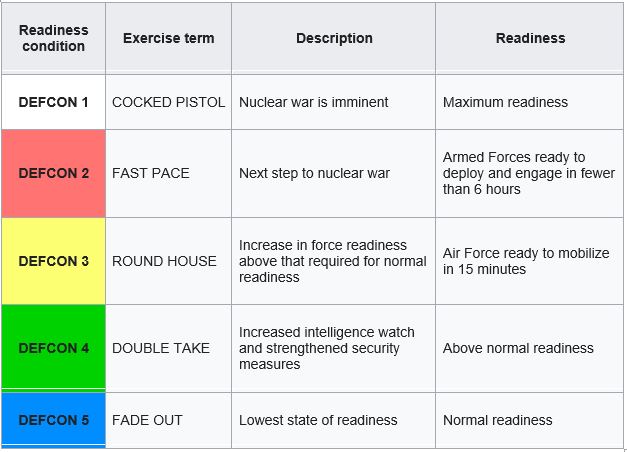

Defcon levels archive#
The Cuban Missile Crisis, 1962: A National Security Archive Documents ReaderĪn "announcement" would also seem to make sense under the logic of nuclear deterrence. There is a chance of the United States or our allies being targeted by nuclear weapons. At this level, military personnel begin to deploy. Took it upon himself to "announce" the move in uncoded message to hisĪ footnote identifies the following source for the last sentence: As this is the most severe level of readiness, all military personnel are kept ready for immediate action. Make sure Moscow noticed, the SAC commander, General Thomas Power, History all American long-range missiles and bombers were now on alert,Īnd scores of planes loaded with atomic bombs were aloft around theĬlock, refueled by areal tankers, waiting over Greenland and northernĬanada for the signal to proceed toward the assigned Soviet target. strategic Command moved from Defense Condition 3 toĭEFCON 2, one level below that of general war. This is from William Taubman's Khrushchev: The Man and His Era, about the Cuban missile crisis in 1962:Īt 10:00 A.M., Washington time, when the quarantine went into fullĮffect, the U.S. FPCON is not the same as the DEFCON system it focuses specifically. This system, formerly referred to as THREATCON, defines levels of terrorism threats against military bases and operations.

Sometimes it deliberately wasn't kept secret from the enemy. Force Protection Condition Levels, or FPCON for short, are part of a threat awareness system implemented by the Department of Defense.


 0 kommentar(er)
0 kommentar(er)
